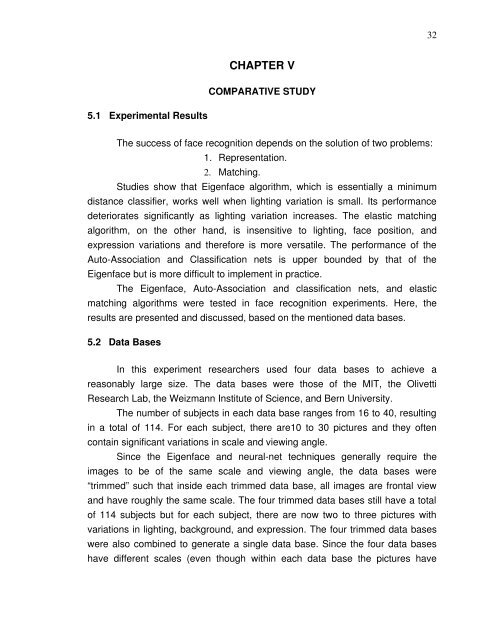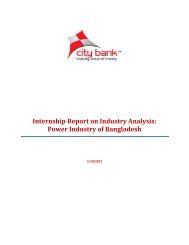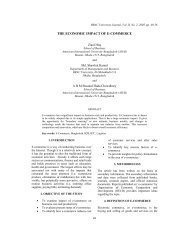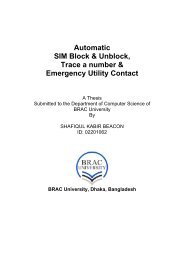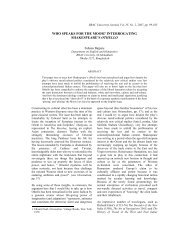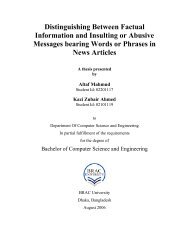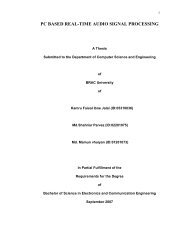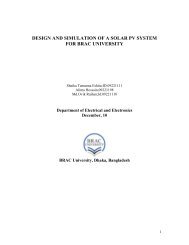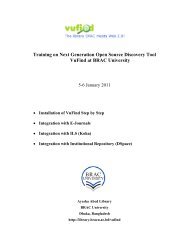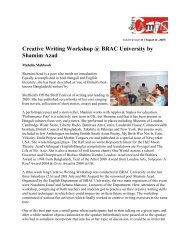LITERATURE SURVEY OF AUTOMATIC FACE RECOGNITION ...
LITERATURE SURVEY OF AUTOMATIC FACE RECOGNITION ...
LITERATURE SURVEY OF AUTOMATIC FACE RECOGNITION ...
You also want an ePaper? Increase the reach of your titles
YUMPU automatically turns print PDFs into web optimized ePapers that Google loves.
5.1 Experimental Results<br />
CHAPTER V<br />
COMPARATIVE STUDY<br />
The success of face recognition depends on the solution of two problems:<br />
1. Representation.<br />
2. Matching.<br />
Studies show that Eigenface algorithm, which is essentially a minimum<br />
distance classifier, works well when lighting variation is small. Its performance<br />
deteriorates significantly as lighting variation increases. The elastic matching<br />
algorithm, on the other hand, is insensitive to lighting, face position, and<br />
expression variations and therefore is more versatile. The performance of the<br />
AutoAssociation and Classification nets is upper bounded by that of the<br />
Eigenface but is more difficult to implement in practice.<br />
The Eigenface, AutoAssociation and classification nets, and elastic<br />
matching algorithms were tested in face recognition experiments. Here, the<br />
results are presented and discussed, based on the mentioned data bases.<br />
5.2 Data Bases<br />
In this experiment researchers used four data bases to achieve a<br />
reasonably large size. The data bases were those of the MIT, the Olivetti<br />
Research Lab, the Weizmann Institute of Science, and Bern University.<br />
The number of subjects in each data base ranges from 16 to 40, resulting<br />
in a total of 114. For each subject, there are10 to 30 pictures and they often<br />
contain significant variations in scale and viewing angle.<br />
Since the Eigenface and neuralnet techniques generally require the<br />
images to be of the same scale and viewing angle, the data bases were<br />
“trimmed” such that inside each trimmed data base, all images are frontal view<br />
and have roughly the same scale. The four trimmed data bases still have a total<br />
of 114 subjects but for each subject, there are now two to three pictures with<br />
variations in lighting, background, and expression. The four trimmed data bases<br />
were also combined to generate a single data base. Since the four data bases<br />
have different scales (even though within each data base the pictures have<br />
32


